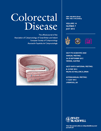Thrombo-prophylaxis in colorectal surgery: a National Questionnaire Survey of the members of the Association of Coloproctology of Great Britain and Ireland
Abstract
Aim Available guidelines from the National Institute for Health and Clinical Excellence (NICE) and the Association of Coloproctology of Great Britain and Ireland (ACPGBI) recommend combined (medical + mechanical) thrombo- prophylaxis. A Cochrane Library review recommends self-administered low-molecular-weight heparin (LMWH) for 2–3 weeks following surgery. In the light of the recent guidelines from the ACPGBI and NICE, we undertook a National Questionnaire Survey to assess current thrombo-prophylaxis practice among colorectal surgeons in the UK.
Method A 10-item questionnaire was designed to enquire into the current management strategy of postoperative thrombo-prophylaxis. The postal questionnaire survey was sent to all 490 active consultant members of the ACPGBI.
Results Of the 490 questionnaires sent, 259 (52.8%) were returned fully completed. Among these, all (100%) respondents reported the routine use of thrombo-prophylaxis, with 243 (93.8%) following departmental guidelines. Combined medical and mechanical prophylaxis was used by 247 (95.40%) respondents. A small number – 12 (4.6%) – used medical prophylaxis only. LMWH was the preferred medical-prophylactic agent of 243 (93.8%) repondents. The majority, 176 (68%), started thrombo-prophylaxis on admission and stopped it at discharge. Seventy-one (27.4%) respondents recommended thrombo-prophylaxis after hospital discharge for an average duration of 4–6 weeks, preferring graduated compression stockings followed by LMWH.
Conclusion The National Questionnaire Survey on thrombo-prophylaxis demonstrated a high degree of concordance with the available guidelines, except for thrombo-prophylaxis to be continued postoperatively for a period of 28 days/4 weeks.




